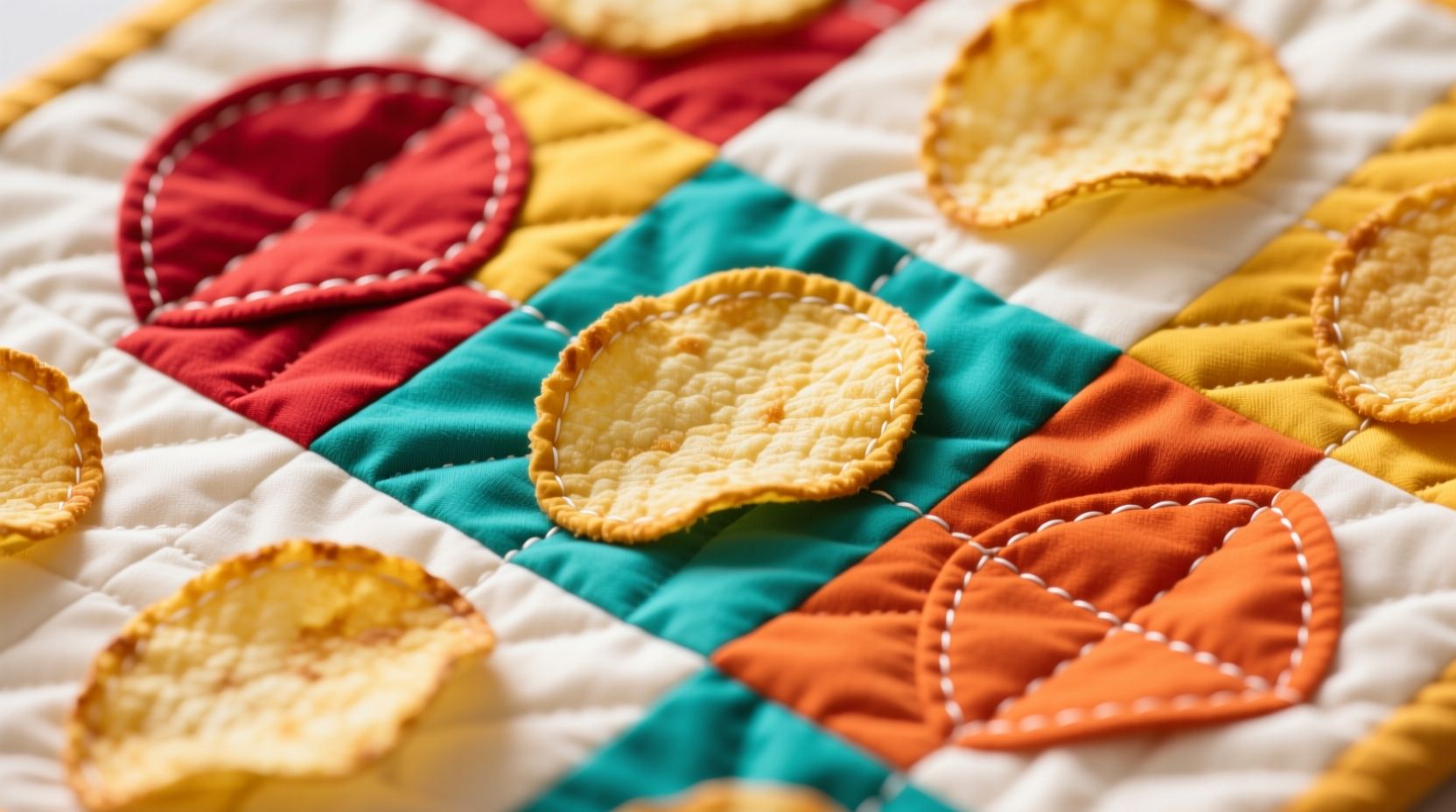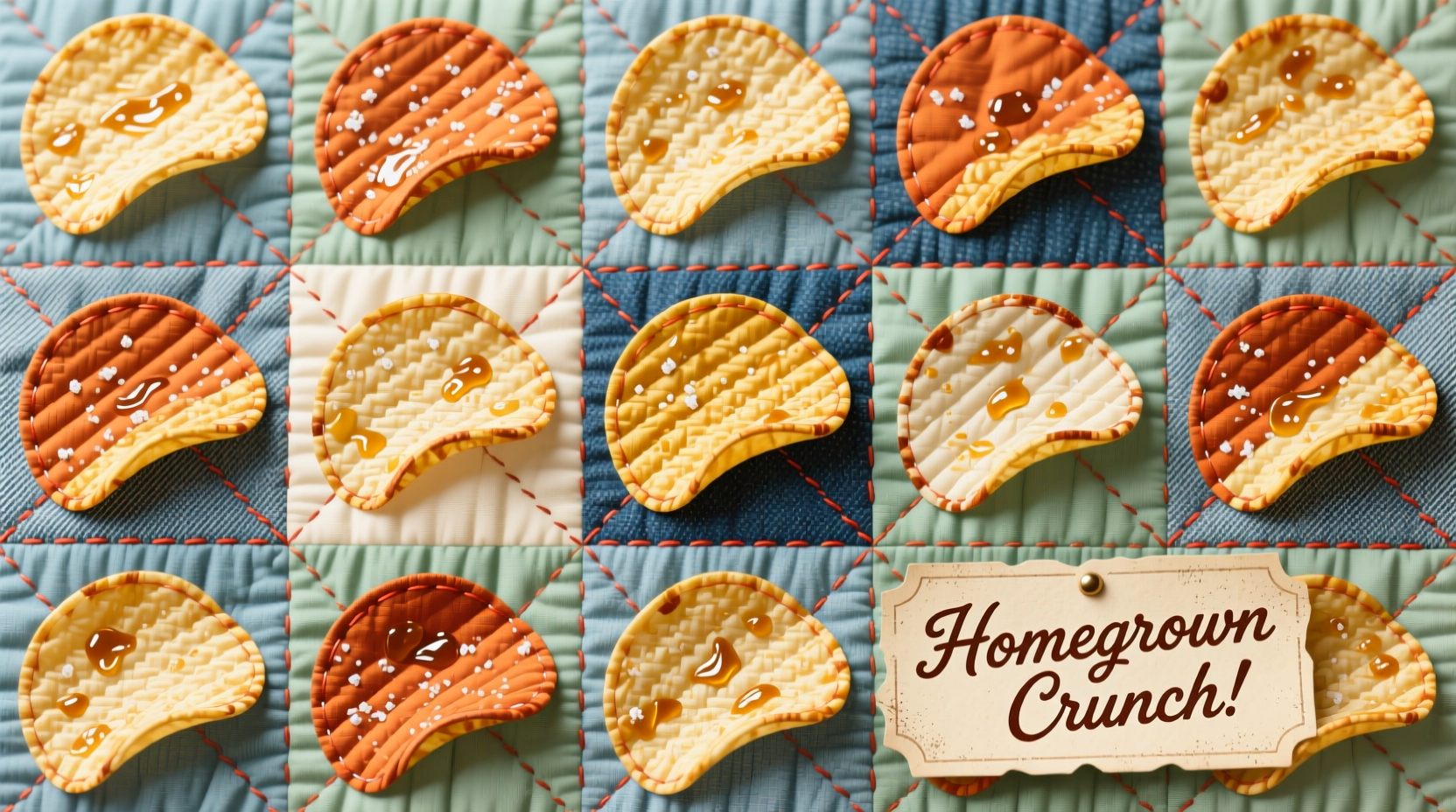If you've ever wondered how to transform fabric scraps into a visually captivating quilt, the potato chip quilt pattern offers the perfect solution. This distinctive technique creates flowing, organic designs using irregular fabric pieces that resemble actual potato chips. Unlike traditional patchwork, this method embraces asymmetry and allows quilters to use even the smallest fabric remnants, making it an eco-friendly choice that reduces textile waste while producing remarkable results.
What Exactly Is a Potato Chip Quilt Pattern?
The potato chip quilt pattern gets its name from the curved, irregular shapes of the fabric pieces used in construction—reminiscent of actual potato chips. This technique emerged during the 1970s quilting renaissance when crafters began experimenting with more improvisational approaches to traditional patchwork. Unlike precise geometric patterns, potato chip quilting celebrates organic shapes and flowing lines, creating movement and visual interest across the quilt surface.
Historically, this technique evolved from earlier scrap quilting traditions where resourceful quilters used every available fabric scrap. The modern potato chip variation specifically developed as quilters sought more fluid designs that moved away from rigid right angles. According to textile historians at the Quilt Alliance, this style gained popularity through influential quilters like Michael James and Nancy Halpern who championed improvisational techniques in the late 20th century.
| Quilting Technique | Shape Characteristics | Skill Level | Fabric Efficiency |
|---|---|---|---|
| Potato Chip | Irregular curved pieces | Intermediate | ★★★★★ (Excellent) |
| Log Cabin | Rectangular strips | Beginner-Intermediate | ★★★☆☆ (Good) |
| English Paper Piecing | Geometric shapes | Intermediate | ★★☆☆☆ (Moderate) |
| Strip Piecing | Straight strips | Beginner | ★★★☆☆ (Good) |
Why Quilters Choose Potato Chip Patterns
Many quilters discover that potato chip patterns offer unique advantages over traditional geometric designs. The organic flow creates visual movement that draws the eye across the quilt surface, while the irregular shapes provide opportunities for creative color placement. Most importantly, this technique maximizes fabric usage—ideal for quilters working with limited stash or seeking sustainable crafting methods.
According to a 2023 survey conducted by the American Quilter's Society, 68% of intermediate quilters reported increased satisfaction with their creative process when working with organic patterns like the potato chip technique compared to traditional geometric patterns. The improvisational nature reduces pressure for perfect precision while still yielding professional-looking results.
Essential Materials for Your Potato Chip Quilt
Creating a successful potato chip quilt requires specific materials that differ slightly from traditional patchwork:
- Fabric selection: A mix of medium-weight quilting cottons works best—avoid extremely lightweight or heavyweight fabrics that might distort during construction
- Cutting tools: A rotary cutter with a fresh blade, self-healing mat, and curved quilting ruler for shaping edges
- Sewing essentials: A walking foot for your sewing machine helps manage multiple layers of irregular shapes
- Helpful notions: Washable fabric markers, curved safety pins, and starch for stabilizing bias edges
When selecting fabrics, consider creating a cohesive color story while maintaining enough contrast between pieces to highlight the organic shapes. Many quilters find success with a limited palette of 3-5 coordinating colors plus neutrals.

Step-by-Step Construction Process
Follow these steps to create your own potato chip quilt pattern:
- Prepare your fabric scraps: Cut irregular curved shapes approximately 2-4 inches wide, varying the curves for visual interest
- Arrange your design: Work on a design wall or large floor space, arranging pieces without strict pattern to create organic flow
- Stabilize bias edges: Apply light starch to pieces with significant bias edges to prevent stretching during sewing
- Sew in sections: Join pieces in small clusters of 3-5 before assembling larger sections
- Press carefully: Use a finger press first, then a warm iron with starch to set seams without distorting shapes
- Assemble the quilt top: Join sections, paying attention to directional flow and color balance
- Complete the quilt: Layer with batting and backing, then quilt with organic stitching that complements the design
Overcoming Common Challenges
Every quilting technique presents unique challenges. For potato chip patterns, quilters often encounter these issues:
- Distortion of shapes: Prevent this by starching fabric pieces before sewing and using a walking foot to maintain consistent feed
- Difficulty matching points: Since this is an organic pattern, perfect points aren't necessary—embrace the irregularity as part of the design
- Managing bias edges: When working with curved pieces that have bias edges, sew quickly and avoid pulling fabric through the machine
- Color imbalance: Step back frequently during layout to assess color distribution across the entire quilt top
Creative Variations to Explore
Once you've mastered the basic potato chip technique, consider these creative variations:
- Monochromatic magic: Create subtle texture using different values of a single color
- Directional flow: Arrange pieces to create intentional movement across the quilt surface
- Combined techniques: Incorporate small sections of traditional patchwork for contrast
- Modern interpretation: Use high-contrast color blocking with graphic irregular shapes
- Miniature version: Create a wall hanging using tiny "chip" pieces for intricate detail
Historical Context and Modern Relevance
The potato chip quilt pattern represents an important evolution in quilting history. While scrap quilting has existed since the 19th century out of necessity, the specific potato chip technique emerged during the 1970s American quilting renaissance. This period saw quilters moving beyond traditional patterns toward more artistic, improvisational approaches.
According to textile archives at the International Quilt Museum, the technique gained wider recognition through publications like "The New Quilter" magazine in the early 1980s. Today, this pattern remains popular among modern quilters seeking sustainable approaches that minimize fabric waste while creating visually dynamic results.
When Potato Chip Patterns Work Best (and When They Don't)
Understanding the appropriate context for this technique ensures successful projects:
- Ideal applications: Wall hangings, art quilts, baby quilts, and decorative throws where visual interest matters more than perfect symmetry
- Less suitable for: Precision-focused projects, quilts requiring exact measurements (like some bed sizes), or when working with extremely limited color palettes
- Skill considerations: Best attempted after mastering basic piecing techniques—beginners may find the irregular shapes challenging at first
- Time investment: Generally requires more time for layout and assembly than traditional patchwork due to the improvisational nature
Resources for Deepening Your Skills
Expand your potato chip quilting knowledge with these recommended resources:
- "Organic Quilting: Beyond the Grid" by Jane Hall (Comprehensive guide to improvisational techniques)
- Online workshop "Mastering Irregular Piecing" through Craftsy
- "The Quilter's Portfolio: Potato Chip Technique" video series from Nancy Zieman Productions
- Local guild workshops focusing on modern quilting techniques











 浙公网安备
33010002000092号
浙公网安备
33010002000092号 浙B2-20120091-4
浙B2-20120091-4